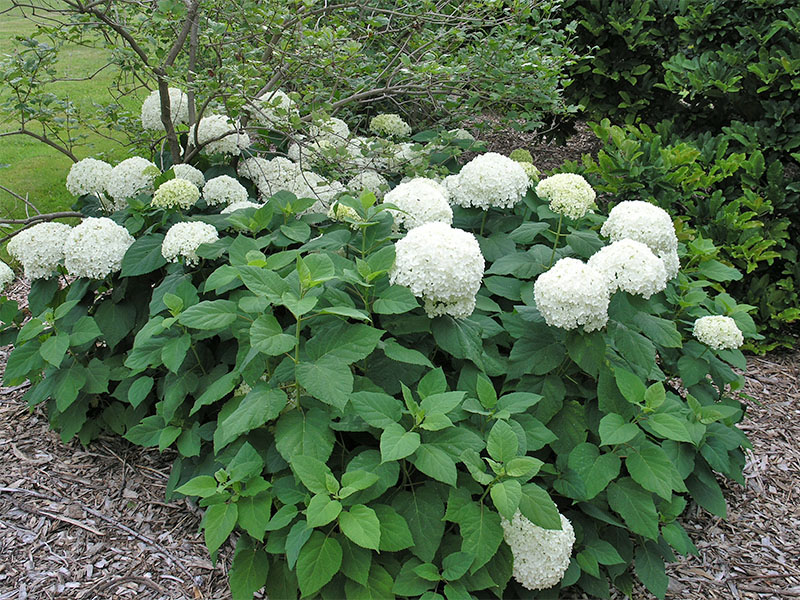| Shape | Low growing, round. |
| Landscape | Used well as mass planting, woodland garden or background. |
| Propagation | Propagated by seed, stem cuttings or crown division in early spring. |
| Cultivation | Very tolerant plant, grows in a variety of soils with full sun to filtered shade. |
| Habitat | Naturally found in moist soils, under forest canopies, along woodland banks and streams. |
| Bark/Stem Description | The stem bark has a peculiar tendency to peel off in several successive thin layers with different colours, hence the common name "sevenbark". |
| Leaf Description | The leaves of smooth hydrangea are large, 8-18 cm long, opposite, serrated, ovate, and deciduous. The lower leaf surface is glabrous or with inconspicuous fine hairs, appearing green; trichomes of the lower surface are restricted to the midrib and ma |
| Flower Description | The inflorescence of smooth hydrangea is a corymb. The showy, sterile flowers are usually absent or if present they are usually less than 1 cm in diameter. |
| Fruit Description | Fruit is a ribbed brown capsule about 2 mm long; many are produced. |
